Splinting & Wrapping for Diastasis Recti
Much has been written about splinting and wrapping for diastasis recti with binders, compression garments, wraps, corsets, girdles, belly bandits, and splints which are all quite different.
On this page, you will find:
- some quotes from women who have benefited greatly from splinting
- my top 2 faves
- some personal thoughts
- links to further reading.
Please note that no advice given anywhere on Fit2B should take the place of seeing your MD or ND, although please understand that many {not all} doctors do not know about diastasis or splinting your abs.
First, I believe wholeheartedly in wrapping the abdominals with a sectional, therapeutic-grade splint that is specifically designed to help re-approximate the two sides of your abs, holding them closer together and supporting natural alignment in the following scenarios:
I believe splinting is helpful:
- When diastasis is wider than 2.5.
- When the linea alba is super thin.
- Right after someone gives birth.
- After Abdominal Surgery.
- When someone is depressed.
- When a “panis” is present (i.e. an apron of extra weight around the midline)
Splinting is NOT forever!
Please read what The Tummy Team has to say about abdominal wrapping and which splints might suit your situation HERE.
Please visit this page for info on pregnancy & splinting.
Here is a compelling article about the history of belly binding from a doula’s perspective.
Taping can be another way to splint the abdominals or an abdominal hernia. Tupler’s product has pre-cut strips and instructions.
More about moments when splinting abs may help…
…when a diastasis rectus abdominus (DRA) is wider than 2.5 fingerwidths and/or the linea alba fascia is thin enough to palpate internal organs.
When the abdominal muscles are stretched so thin, they aren’t able to support your spine, your posture suffers and your back hurts. If your abs aren’t holding your internal organs in their proper spots, your digestion suffers and your tummy hurts. Therapeutic splinting has helped many of my clients improve core connection, facilitate fascial regeneration by keeping pressure off healing areas, narrow diastasis quicker, and even minimize their minor non-surgical hernias.
…right after giving birth.
I believe every newly-delivered mama should start with basic core exercises for diastasis recti such as these and splint within 3 days post-vaginal birth and 10 days post-surgical birth to promote complete core recovery.
Read our Pregnancy Q&A page for more info on this and other pregnancy related topics.
…right after abdominal surgery.
The muscles and nerves have been cut, so it’s crucial to support your midsection. After a c-section, many will splint your abs. Some nurses have told me their hospitals want you to wrap to wrap your tummy until your drain and stitches are out. However, if you have a tummy tuck or abdominal muscle repair, you’ll be sent home in a compression garment that they want you to wear for 3-6 weeks. These are hard to get on and off, so you pretty much live in them. They are meant to reduce swelling and support your core while it heals.
When people are especially heavy around their middle.
I’ve seen how splinting can also be incredibly helpful to those carrying extra mass around their belly beyond pregnancy, making it easier for them to align, engage and FEEL without having to use their hands to support their girth while exercising. Extra weight pulling a belly forward can counteract a solid belly breath, and holding your fluff up with your phalanges isn’t conducive to cardio either. The apron of skin that hangs down is known as a “panis,” and supporting it feels good.
…when someone is depressed and in a true “slump” both emotionally and physically.
I have read case studies like this one where splinting helps to immediately stabilize emotions and refocus energy while offering instant hope the second a person feels that gentle hug around their middle. I’ve also witnessed it take place myself. The splint goes on – the person takes this big breath and their shoulders relax, and suddenly they smile. It’s miraculous!
Please Note:
Splints aren’t the same as corsets. Splinting your abs may help “flatten your tummy” if your splint helps reduce bloating and swelling, and it helps you narrow a diastasis rectus abdominus that is preventing your abdominal wall from doing its main job: supporting and protecting your spine and internal organs.
Many belly binders and compression garments like spanx are so supportive, they don’t let the muscles work much at all; this creates co-dependence on the device, weakness in the core, and can contribute to low back pain and poor posture when it’s removed. Worn incorrectly, it can also lead to leaking.
I do not recommend splinting alone without restorative exercises for core strength. The ones I’ve reviewed below do not cause incontinence or pain when used as directed. These ab splints are designed for rehabilitation, not compression nor looks.
The Two Splints I Recommend
My research has led me to the following 2 splints that have been engineered by qualified specialists who are literally working in the trenches of closing gaps, so to speak. One single brand might not work for everyone due to body shape and life patterns, so if you believe you need to splint, read ALL this information, contact the companies with any questions, and choose the one that resonates with your needs.
Click HERE to see The Tummy Team Therapy-Grade Splints – The velcro is the best ever, and these are truly a member favorite that work with all body types.choice of straight, 2-panel, 3-panel, and 4-panel splints in various sizes. Member’s feedback on this is that it contains “spillage” and hides the “muffin top” better than the others. Use code “Fit2B” to save 10% on your order! International orders accepted!
Click HERE to see the FitSplint – Designed by Celeste Goodson of ReCORE Fitness, who also happens to be a contributor for our “Experts on Diastasis Recti” ecourse, this arm-style splint has both prenatal and postnatal options. Members report their favorite part is the silicone lining that helps it stay in place. The postnatal FitSplint works best with athletic builds, and is great for runners and those with narrower waists. Many Fit2B members have used the Maternity FitSplint during pregnancy, being sure to wrap it over their navel which is where abdominal fascia needs the most support. Save 15% on FitSplints when you enter this code at checkout: Moms2Bfit
Are there other splints out there? Yes, I also really like how Tupler has upgraded hers, and EVB shorts are awesome for the pelvic floor. The “Ab Tank” is also pretty great, designed by therapists and available in Canada. The two I reviewed to and linked above are the ones my members keep loving.
Splinting shouldn’t sabotage
Knowing firsthand how frustration with a poorly fitting splint can sabotage the overall healing process, Fit2B only recommends diastasis splints we have tried. We want belly binders to last at least 6-8 weeks through the most crucial phase of ab rehab. A quality core splint will feel like a firm hug that calms you.
Splinting isn’t just for diastasis recti
You don’t need to have diastasis rectus abdominis to benefit from splinting your core. The way it helps center and support can also help fight depression, digestion, hernia, and lower back pain. Please speak with your doctor or physical therapist about using them that way.
Splinting isn’t right for everyone. If your Diastasis Recti is well on its way to healing without one, and you don’t have the other issues I listed above, I wouldn’t recommend it. However, if you feel like you’re falling apart at the seams, and your DRA is pretty wide and deep, and just doing a set of exercises – even under the care of a PT – isn’t working, please consider splinting your abs to help support your muscles in their proper positions where they can work better for you. Why not try it now before you opt for surgical muscle repair which will have you in an even stiffer one during recovery?!
Splinting Stories
“After my last birth (#4) I splinted immediately as we left the birthing centre. I was able to gain core strength faster and felt less unstable in those first few days because of the added support. I wish i would have known earlier for previous births as it would have been easier to function in those first few days!” -Allison E.
“Just another fit2b win! We went on family trip to the mountains. I am 31 weeks pregnant and had no issues completing a total of 5 hikes, roughly 10 hours total, over 4 days. Many hours were spent on uneven ground, scaling large rocks, and doing steep inclines. I wore my fitsplint the whole time of course! My muscles are fatigued but feeling great! We even cut off at least 30 minutes from a hike we did at the same point in pregnancy when I was pregnant with our first two years ago! So excited to see how much more in shape I am this pregnancy and how my abs were able to keep up to all the work and still feel strong!” – Brittany L.
“This was the first pregnancy I splinted with and I didn’t use it much in pregnancy because I didn’t notice my back hurting…felt like I had a strong core. Postpartum I began using it and my belly shrunk so much faster! I noticed my afterbirth pains were vastly minimized when I was wearing it. We had a home birth and on our daughters second day of life she had a fever…we ended up in a hospital two hours from home for three weeks treating a viral infection. I had a lot of blood loss in the delivery so my midwife said to take it slow…not possible in our situation. And yet this was the best recovery I’ve ever had…after four pregnancies. I’m not sure what helps the most…this was my first pregnancy after discovering fit2b and between good core strength, nutrition, and splinting, and Gods grace, I am so thankful for an awesome recovery… to not feel like things are falling out down there is so wonderful!” –Brandy A.
“Without the splint I felt like everything was wobbling all over the place. It actually felt like my guts were going to spill to the floor, and even though I know that would be impossible it made me feel really nauseated. The splint really helped to stabilize that and also helped with my lower back ache.” -Kristin W.
“I used a splint after my fourth c-section. I waited until day 10 and i feel was really helpful. splinting gave me great support and it helped with the terrible back ache I’ve suffered with after my precious babies. I felt it was extra helpful to keep me in check with my alignment. (It was not very comfortable if I decided to hunch over or tuck my tailbone, especially while nursing constantly. By 10 weeks my diastasis was at a 1, from a 3. I was not super diligent with working out, just kept to proper alignment, some belly breathes and a few pulses here and there. I really feel the splint helped postpartum recovery for me. I also found that I have feeling between my belly button and scar, it has been numb since my first c section, 6 years ago. The only difference has been splinting and tummy safe exercising.” -Kara E.
If you have any further questions about splinting, please contact the makers of the ones I recommended above via their websites. They are wonderful people, and I trust them completely to steer you in the right direction. I’ve even known them to say, “No, you don’t need one right now. What you need to focus on is your nutrition, or ….” They all have holistic approaches and truly want to help people which is why I trust them and why I recommend them.
10 thoughts on “Splinting & Wrapping”
Comments are closed.

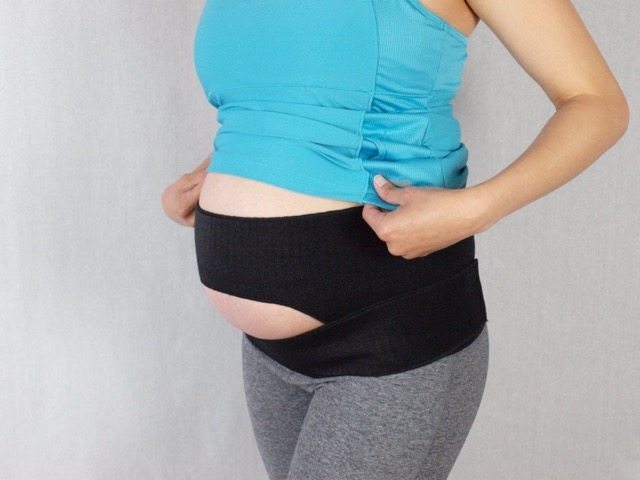
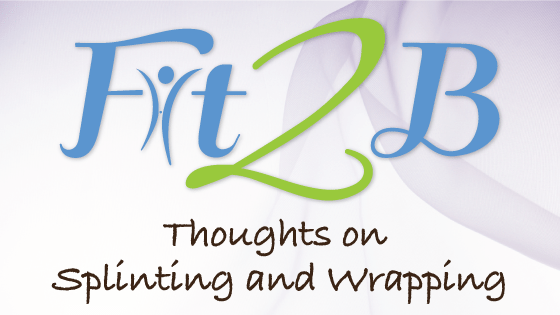
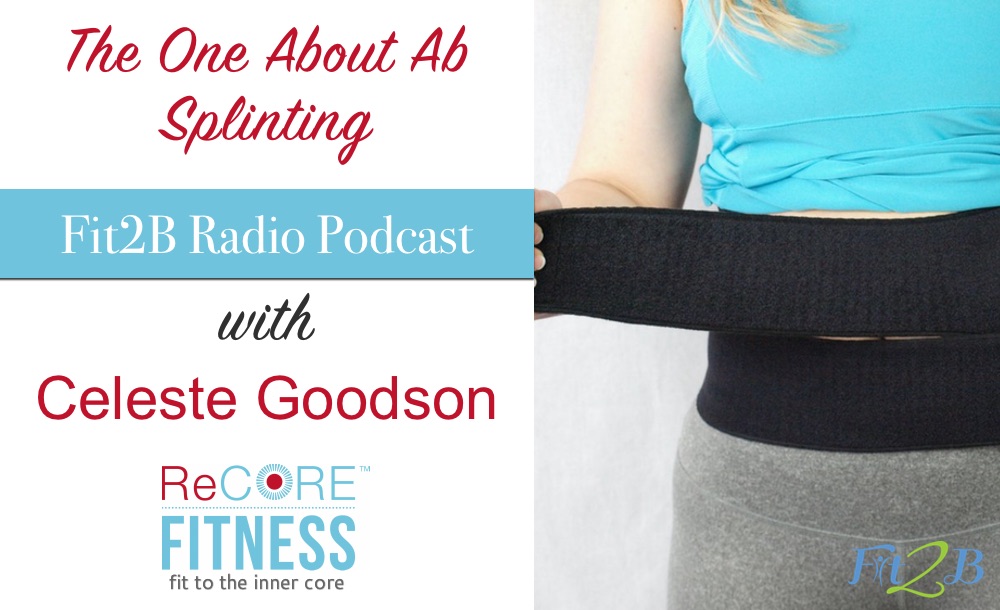
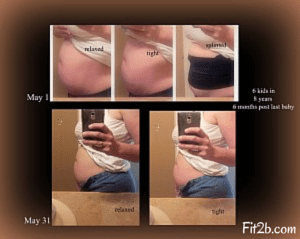
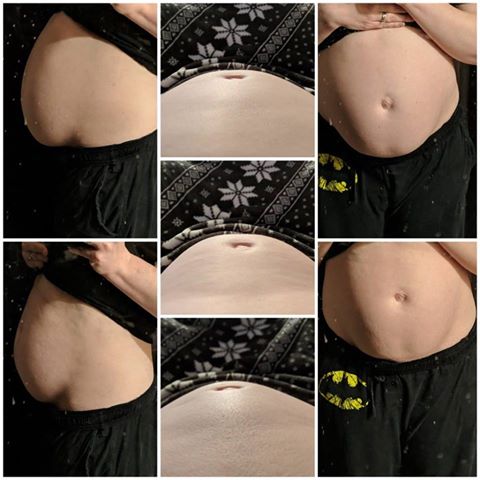
Pingback: Fit2B™ New Mamas | Fit2B Studio
Pingback: Three Exercises for a STRONG Birth | Fit2B Studio
Pingback: Gift Ideas for Pregnant Women, New Mothers, and Grandmothers! | Fit2B Studio
Pingback: Ultimate Guide to Diastasis Recti (aka Mama Pooch!) - Nicole Plus More
Pingback: Ultimate Guide to Diastasis Recti (aka Mama Pooch!) • Mommy Plus More
Pingback: Natural Back Pain Relief that Will Surprise You
Pingback: Binding your belly after birth
Pingback: Why I Disagree with Banning the Word "Broken" | Fit2B Studio
Pingback: 6 Exercise Tips for Diastasis Recti | The Tummy Team
Pingback: 14 Essentials You Need for Your Postpartum Body: A Pre-Baby Shopping List for Mommy! - Simply Rebekah